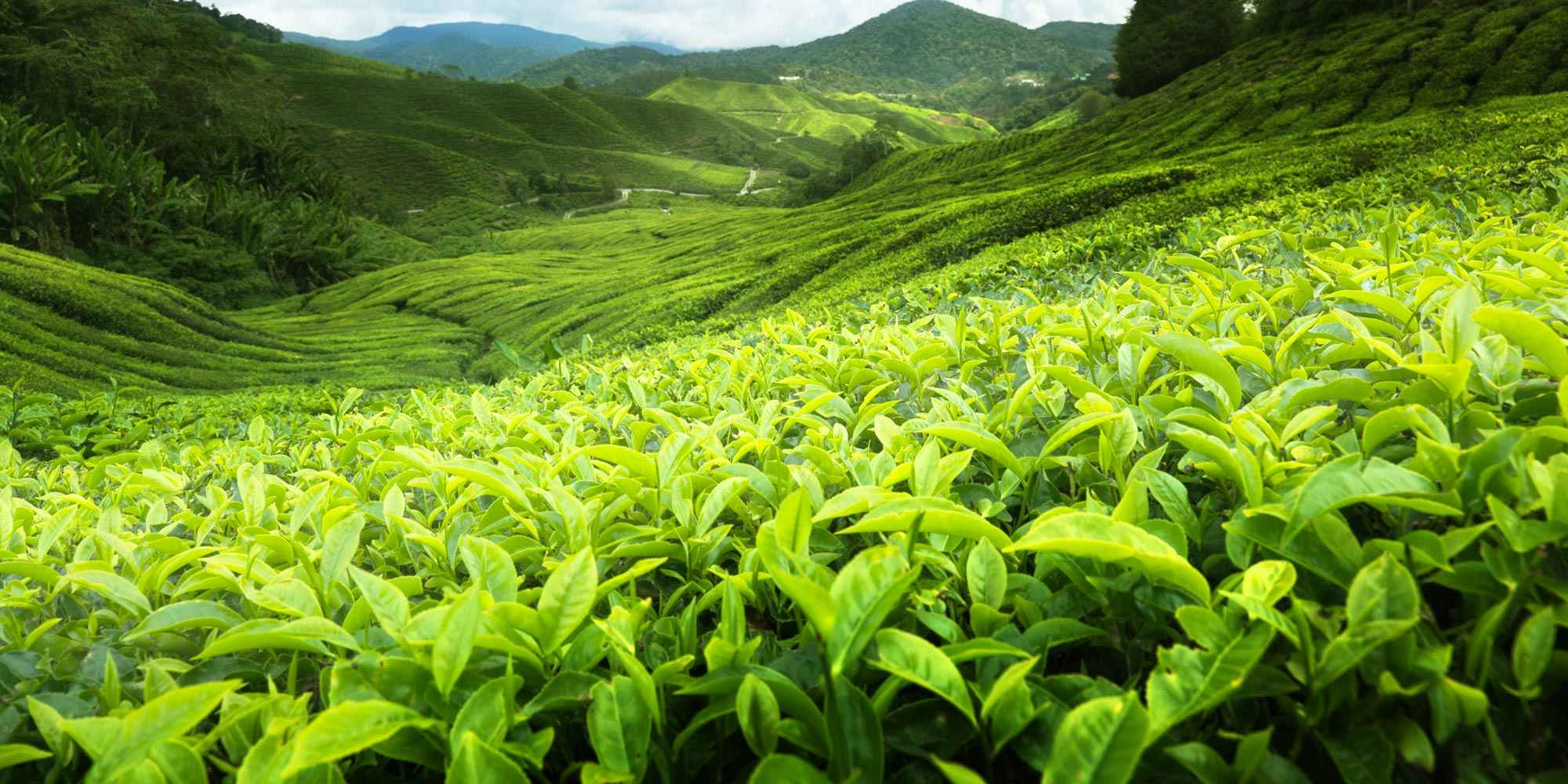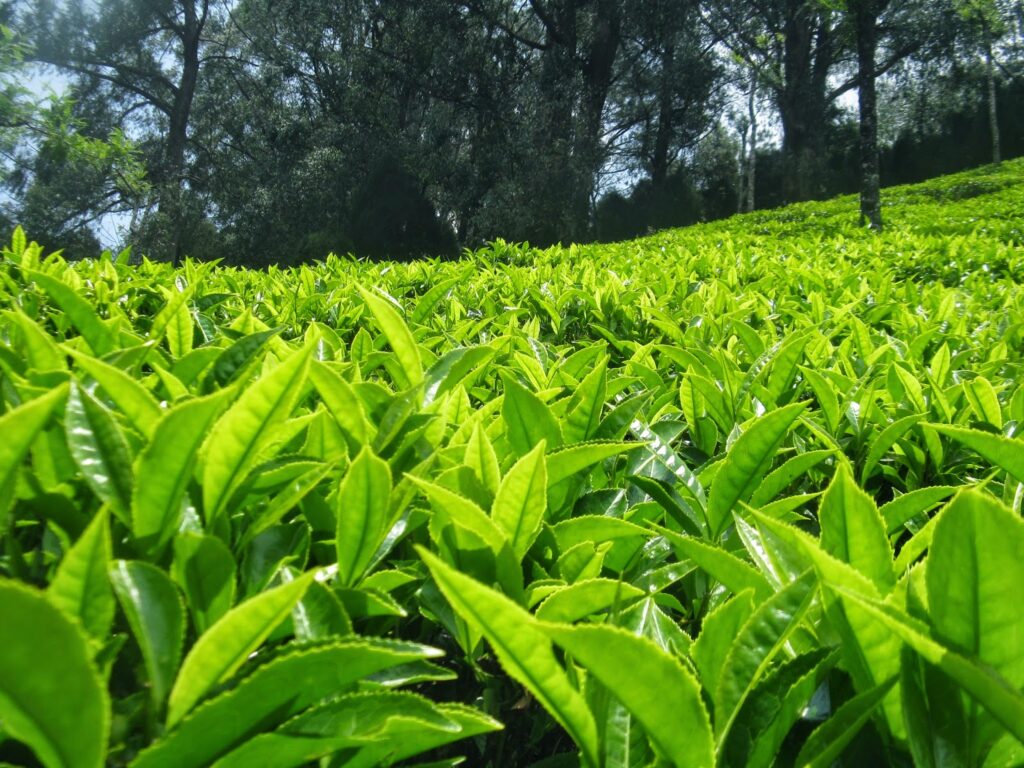

by admin
- Blog / Viet Nam Tea
- 09/05/2024
- 50
- 0
In the realm of tea, few varieties captivate the senses quite like green tea. With its vibrant hues and delicate aromas, this ancient beverage has been revered for centuries, not only for its invigorating taste but also for its profound cultural significance. Join us as we embark on a sensory exploration of the delicate flavors of green tea, unveiling the intricate nuances that make it a true masterpiece of nature’s artistry.

Unveiling the Subtle Nuances of Green Tea
The Art of Cultivation
The journey of green tea begins long before it graces our cups. The meticulous cultivation process plays a pivotal role in shaping its unique flavors. From the carefully selected tea bushes to the skillful picking and withering techniques, each step is meticulously executed to preserve the delicate essence of the leaves.
Oxidation and Processing
Unlike its fully oxidized counterparts, green tea undergoes minimal oxidation, allowing it to retain its fresh, grassy notes and vibrant hues. The processing methods, whether steaming or pan-firing, further contribute to the tea’s distinct character, preserving its delicate flavors and aromas.
Terroir and Varietal Influences
Like fine wine, the terroir – the unique combination of soil, climate, and topography – imparts subtle nuances to green tea. From the misty mountains of Japan to the lush tea gardens of China, each region lends its own distinctive character, resulting in a kaleidoscope of flavors that range from vegetal and herbaceous to subtly sweet and floral.
Exploring the Sensory Journey of Green Tea
The Visual Allure
Before the first sip, green tea captivates the eye with its vivid shades, ranging from pale jade to deep emerald hues. The carefully rolled or twisted leaves, often adorned with delicate downy trichomes, hint at the complexities that await within.
Aromatic Enchantment
As the tea steeps, the fragrant aromas begin to unfurl, tantalizing the senses. Grassy and herbaceous notes mingle with hints of fresh vegetation, evoking memories of strolling through a lush, dewy meadow on a crisp morning.
The Dance of Flavors
With the first sip, the palate is awakened by a symphony of flavors. Delicate vegetal notes intermingle with subtle sweetness, creating a harmonious balance that lingers pleasantly on the tongue. Some green teas may offer a refreshing astringency, while others reveal nuances of nuttiness or even a whisper of floral grace.
Appreciating the Intricate Taste Profile of Green Tea
Steeping Techniques
To fully appreciate the delicate flavors of green tea, proper steeping techniques are essential. The water temperature, steep time, and leaf-to-water ratio all play a crucial role in extracting the optimal balance of flavors and aromas.
Gourmet Tea Pairings
Green tea’s versatile character lends itself beautifully to culinary pairings. From delicate sushi and sashimi to savory umami-rich dishes, the subtle flavors of green tea can complement and enhance a wide array of culinary delights.
Cultural Traditions
Beyond its sensory appeal, green tea is deeply woven into the cultural fabric of many societies. Traditional tea ceremonies, such as the Japanese “Chanoyu” and the Chinese “Gongfu Cha,” elevate the art of tea appreciation to a revered ritual, celebrating the beauty of simplicity and the pursuit of harmony.
The Art of Savoring Green Tea’s Complexity
Cultivating Mindfulness
To truly savor the delicate flavors of green tea, one must approach the experience with mindfulness and presence. Slowing down, quieting the mind, and engaging all senses allow the subtle nuances to unfold and reveal their depth.
Exploring Flavor Profiles
Each variety of green tea offers its own unique flavor profile, ranging from the grassy and vegetal notes of Sencha to the delicate floral nuances of Longjing. Experienced tea enthusiasts delight in exploring the intricate tapestry of flavors, appreciating the subtle variations that make each cup a distinctive sensory journey.
Tea and Relaxation
Beyond its flavors, green tea has long been celebrated for its calming and rejuvenating properties. The ritual of brewing and savoring a cup of green tea can be a moment of respite, a gentle pause in the hustle and bustle of daily life, allowing one to reconnect with the present moment and find inner tranquility.
Unraveling the Sensory Tapestry of Green Tea
Steeping Techniques Revisited
To delve deeper into the world of green tea, we must master the art of steeping. Each variety may require subtle adjustments in water temperature, steep time, and leaf-to-water ratio to unlock its full potential.

Water Temperature
| Tea Variety | Recommended Water Temperature |
|---|---|
| Sencha | 160-170°F (71-77°C) |
| Gyokuro | 122-140°F (50-60°C) |
| Longjing | 175-185°F (79-85°C) |
Steep Time
- Sencha: 1-2 minutes for the first infusion, gradually increasing for subsequent infusions.
- Gyokuro: 2-3 minutes for the first infusion, adjusting as needed.
- Longjing: 2-3 minutes for the first infusion, with multiple infusions possible.
Leaf-to-Water Ratio
- Sencha: 1 teaspoon of leaves per 6-8 oz (180-240 ml) of water.
- Gyokuro: 1 teaspoon of leaves per 4-6 oz (120-180 ml) of water.
- Longjing: 1 teaspoon of leaves per 6-8 oz (180-240 ml) of water.
Sensory Exploration Techniques
To fully appreciate the depth of flavors, consider employing the following sensory exploration techniques:
- Aroma Evaluation: Gently swirl the tea and inhale deeply, allowing the aromas to engage your olfactory senses.
- Palate Cleansing: Between sips, cleanse your palate with a neutral palate cleanser, such as a piece of plain cracker or a sip of water, to reset your taste buds.
- Flavor Descriptors: Develop a vocabulary of flavor descriptors to articulate the nuances you experience, such as grassy, vegetal, nutty, or floral.
The Art of Tea Appreciation
Ultimately, the art of tea appreciation lies in the ability to slow down, savor each sip, and immerse oneself in the present moment. By cultivating this mindful approach, the delicate flavors of green tea can reveal their true depth, offering a sensory experience that transcends mere taste and becomes a journey of self-discovery and connection.
Delving into the World of Green Tea’s Flavors
Sencha: The Quintessential Japanese Green Tea
- Grassy and vegetal notes
- Subtle sweetness
- Refreshing astringency
Steeping Techniques for Sencha
- Water Temperature: 160-170°F (71-77°C)
- Steep Time: 1-2 minutes for the first infusion, gradually increasing for subsequent infusions
- Leaf-to-Water Ratio: 1 teaspoon of leaves per 6-8 oz (180-240 ml) of water
Gyokuro: The Prized Shade-Grown Green Tea
- Rich umami flavors
- Delicate sweetness
- Velvety mouthfeel
Steeping Techniques for Gyokuro
- Water Temperature: 122-140°F (50-60°C)
- Steep Time: 2-3 minutes for the first infusion, adjusting as needed
- Leaf-to-Water Ratio: 1 teaspoon of leaves per 4-6 oz (120-180 ml) of water
Longjing: The Legendary Dragon Well Green Tea
- Chestnut-like nuttiness
- Floral and vegetal notes
- Smooth and mellow finish
Steeping Techniques for Longjing
- Water Temperature: 175-185°F (79-85°C)
- Steep Time: 2-3 minutes for the first infusion, with multiple infusions possible
- Leaf-to-Water Ratio: 1 teaspoon of leaves per 6-8 oz (180-240 ml) of waterAromatic Delights: The Allure of Green Tea
Green tea’s aromatic profile is a key component of its sensory experience, offering a symphony of scents that captivate the senses and set the stage for the flavors to come.
Fragrant Varieties
Each type of green tea boasts its own unique aroma, from the fresh grassiness of Sencha to the nutty notes of Longjing. Gyokuro, with its rich umami scent, entices tea lovers with its depth and complexity.
Brewing Rituals
The act of brewing green tea itself releases a fragrant bouquet that fills the air, signaling the start of a sensory journey. The steam rising from the teapot carries hints of the tea’s essence, inviting anticipation and setting the mood for indulgence.
Scent Exploration
Take a moment to appreciate the aroma of your brewed green tea before taking the first sip. Inhale deeply and let the subtle nuances of the fragrance unfold, preparing your palate for the delicate dance of flavors that awaits.
Discovering the Hidden Treasures of Green Tea’s Taste
Green tea’s taste profile is a treasure trove waiting to be discovered, with each cup offering a new revelation and a chance to explore the nuances of flavor that lie within.
Flavor Complexity
The complexity of green tea’s taste is a result of its growing conditions, processing methods, and varietal characteristics. From the vegetal notes of Sencha to the chestnut-like undertones of Longjing, each sip tells a story of craftsmanship and terroir.
Lingering Sweetness
One of the hallmarks of green tea is its subtle sweetness that lingers on the palate, leaving a gentle aftertaste that invites contemplation. This natural sweetness is a testament to the quality of the leaves and the care taken in their preparation.
Nutty Undertones
Some varieties of green tea reveal hidden treasures of nuttiness, adding depth and complexity to the overall flavor profile. These nutty undertones can range from almond-like notes to more robust chestnut or hazelnut flavors, enriching the sensory experience.

Green Tea: A Sensory Symphony of Delights
Green tea is not just a beverage; it is a sensory symphony that engages all aspects of perception, from sight and smell to taste and touch. Each element harmonizes to create a holistic experience that transcends the simple act of drinking tea.
Visual Elegance
The visual beauty of green tea leaves unfurling in hot water is a mesmerizing sight that speaks to the artistry of tea-making. The vibrant hues of the liquor, ranging from pale jade to deep emerald, add an aesthetic dimension to the tasting experience.
Textural Pleasures
The mouthfeel of green tea is another dimension of its sensory appeal, with some varieties boasting a velvety smoothness while others exhibit a crisp, refreshing astringency. The interplay of textures on the palate adds depth and interest to each sip.
Emotional Connection
Beyond the physical sensations, green tea has the power to evoke emotions and memories, transporting drinkers to serene gardens or misty mountainsides with each sip. The sensory symphony of green tea is a journey of the heart as much as the senses.
Conclusion
In conclusion, the delicate flavors of green tea offer a sensory journey like no other, inviting tea enthusiasts to explore a world of nuance and complexity. From the fragrant allure of its aromas to the hidden treasures of its taste, green tea captivates the senses and nourishes the soul. By savoring each cup mindfully and appreciating the artistry behind each leaf, we can unlock the full sensory tapestry of green tea and immerse ourselves in a symphony of delights. So, brew a pot, take a sip, and let the subtle nuances of green tea transport you to a realm of tranquility and taste.




